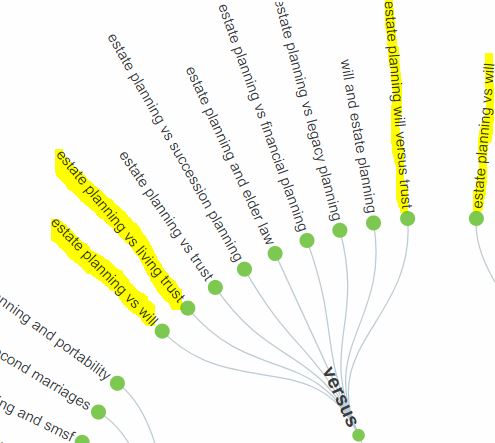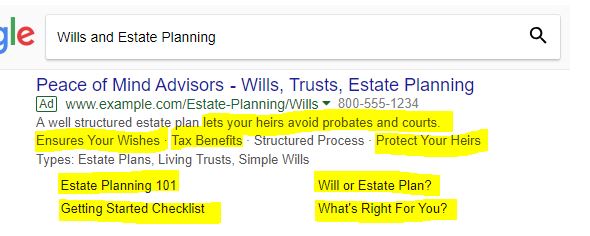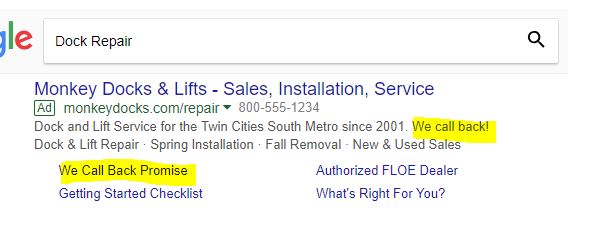
Got writer’s block when it comes to PPC ad copy?
Unsure of what to put in that second headline or the callout extensions?
The best performing Google Ads copy is always developed with some fundamental classic marketing and advertising principle in mind.
The principles that have proven themselves effective over time (meaning multiple generations) all share two important characteristics:
- They derive from a fundamental understanding of human psychology.
- They transfer easily when new platforms and technology emerges.
1. The More Informative Your Advertising, the More Persuasive It Will Be
This first principle comes from David Ogilvy, who is widely considered to be the “Father of Modern Advertising.”While Don Draper was a fictional character on a popular TV show set in the ’60s, Ogilvy was a real-life “Mad Man” who believed simply that having useful information on your customer is the ultimate key to successful advertising (provided you act on it, of course).
Today we can find out what our potential customers are looking for with a few simple clicks.
Let’s take “Estate Planning” as an example. An average middle-income middle-age consumer might assume that estate planning applies only to the old and/or wealthy.
This person may have started out believing the best course of action would just be a will. She may have talked to friends, colleagues, or a financial advisor who casually mentioned estate planning or living trust.
This got her thinking about the need to research her options so here is where the advertiser needs to be thinking about how to resonate with someone who’s in that stage.
One great tool that gets discussed a lot on blogs and at industry conferences is Answer the Public. It’s popular for a good reason.
Using the same principles as Google and Bing’s autocomplete search suggestions, Answer the Public gives you important context and clues into the mind of your potential client.
Type in “Estate Planning” on the home page of Answer the Public and once you see the results, click through the links along the top navigation pane to view your phrase used in questions, prepositions, and comparisons that people may make.
Below is a closer look at a sub-segment of results returned. Here, as an advertiser you can start to appreciate the value of having this type of information to work from:

Keep in mind this potential client will not likely query every comparison you see above, but there’s a strong probability that many of these thoughts are going through her mind. She may just query [Wills and Estate Planning].
Based on what your research shows might be going through her mind, a first draft of your ad copy should speak to some of the questions she probably has:

2. Scarcity
In his groundbreaking book “Influence” (published in 1984), Dr. Robert Cialdini details his years of research showing that the less available something is, the more likely people will want it.This can work one of two ways:
- Limited quantity
- Limited time
Scarcity only works as an advertising tactic when something truly is “scarce”.
If your strategy is to have a 30 percent off sale “once a month every month,” don’t be surprised when ad copy stating “hurry, ends soon!” quickly becomes ineffective.
However, for events like an annual sale, Black Friday event, or Grand Opening that truly don’t last, use it to your advantage in your ad copy.
For Google Search Ads, here’s a script that lets you put a sales countdown calendar into your copy using ad customizers.
3. Take Only What the Intended Audience Will Give You
In their classic book, “Positioning”, marketing legends Al Ries and Jack Trout preach that you must understand how your competitor is perceived in the mind of the customer that you’re both trying to earn.For example, if that competitor is already seen as the low-price leader, you simply won’t win that battle.
Even if you compete with Walmart – and your prices are actually lower than them – they’re fundamentally too big, too well established in the mind of the consumer, and will ultimately win that battle of perceptions.
As an advertiser, you must find your opening in a competitive market in order to properly position your product or service in an ad. There’s always some opening that gives you an advantage.
A few examples to consider:
- You’re local and involved in the community and your competitors are not.
- You’re more expensive, but independent quality ratings and reviews show you’re better.
- When someone leaves a message, you call back (seriously, that can be the difference in the service industry provided you live up to that promise – see below).
- The competitor has a broad reach whereas your solution is only right for a specific segment (but for that segment your solution is really, really right).
Because anyone looking for their service can feel that “most dock and lift guys don’t call back”, they take that and attack it head-on:

4. The People You Address Are Selfish…
“…as we all are. They care nothing about your interests or profit. They seek service for themselves.” – Claude Hopkins Author of Scientific Advertising, 1923Nearly century ago, Hopkins reminded the advertising world that customers are fundamentally selfish and aren’t going to buy from you unless you can address their specific need.
It’s a simple principle, but easy for marketers and advertisers to forget.
Fortunately, today we have many tools at our disposal that Hopkins didn’t have that give us insights into the “selfish needs” of our customers (see Answer The Public in #1).
Sometimes those needs are really simple.
For example, below is an ad by a Mercedes-Benz dealer who knows they have customers that hate having to make appointments. Of course not all hate it, but it’s a real issue for a large enough segment of their customers that they devote the entire second headline to addressing it:

5. Be Empathetic…
“…talk about what THEY (your customers) want and SHOW them how to get it.” – Dale CarnegieIn 1937, Carnegie wrote about this principle in his legendary book “How to Win Friends and Influence People”.
To this day, what he outlined serves as how to guide for successful sales and marketing people everywhere. At the core, his message was “it’s always about them, never you.”
Think about your own behavior as a buyer. Ultimately you’re more likely to buy from someone who has demonstrated they understand your needs and make it easy for you to meet them.
Empathy is admittedly an overused term in the marketing world, but it’s also an underutilized practice.
Let’s look to the medical field as a perfect example of the importance of this principle.
A symptom or diagnosis can bring fear, uncertainty, and a general feeling that you’re facing it all alone.
Case in point: the prospect of needing spinal surgery – even if it’s minor.

The ad above for spinal laminectomy isn’t perfect, but it clearly shows the clinic empathizes with its potential patients. It addresses key concerns:
- Minimally invasive.
- Precision.
- Faster recovery time.
- Track record of success stories to inspire patient confidence.
- Call for more info or an appointment.
- Free MRI review.
- Local clinic location.
Bottom Line
PPC will continue to evolve, but the classic marketing and advertising principles outlined here will stick because fundamental human behavior is at the core of each.Remember them when you’re crafting ad copy to test. Remember there is no one-size-fits-all approach and results will vary depending on your audience, market, product, and timing.
Reference:https://www.searchenginejournal.com/writing-google-ad-copy/264669/?ver=264669X2
No comments:
Post a Comment